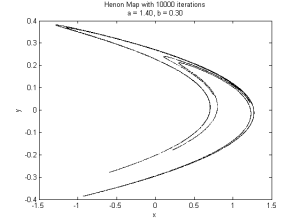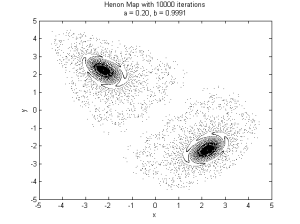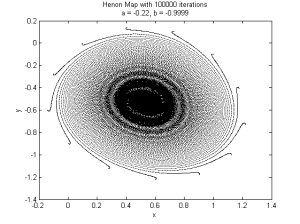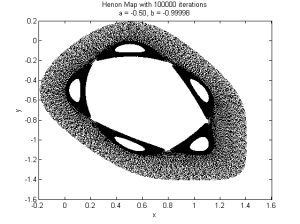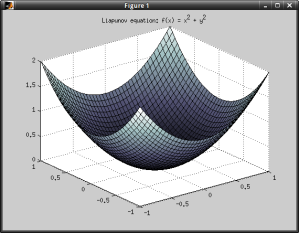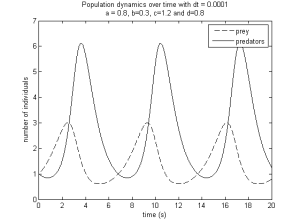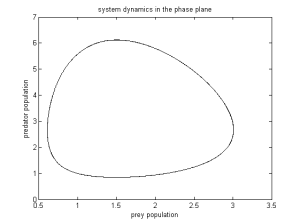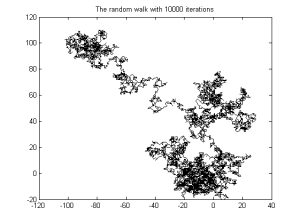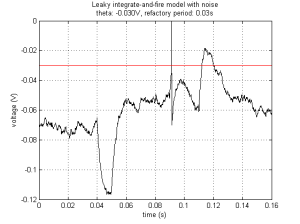In my studying of dynamical systems I stumbled upon the Hénon Map today, a two-dimensional dynamical system with a strange attractor which demonstrates chaotic behaviour. The system is described by a coupled pair of equations. Here’s what the classical version looks like:
There are only two parameters, but playing around with them yields some interesting results:
Again, the code to implement this is pretty simple, so I’ll post it here as opposed to GitHub (though I’ll probably post a version on GitHub which draws the system state after each iteration):
a = 1.4;
b = 0.3;
iterations = 10000;
x = zeros(1, iterations);
y = zeros(1, iterations);
% simulation
for i=1:iterations
x(1,i+1) = 1-(a*x(1,i)^2) + y(1,i);
y(1,i+1) = b*x(1,i);
end
% plotting
plot(x(5:iterations),y(5:iterations), '.k','MarkerSize',3)
line1 = sprintf('Henon Map with %.0f iterations', iterations);
line2 = sprintf('a = %.2f, b = %.5f', a, b);
title({line1, line2});
xlabel('x')
ylabel('y')
